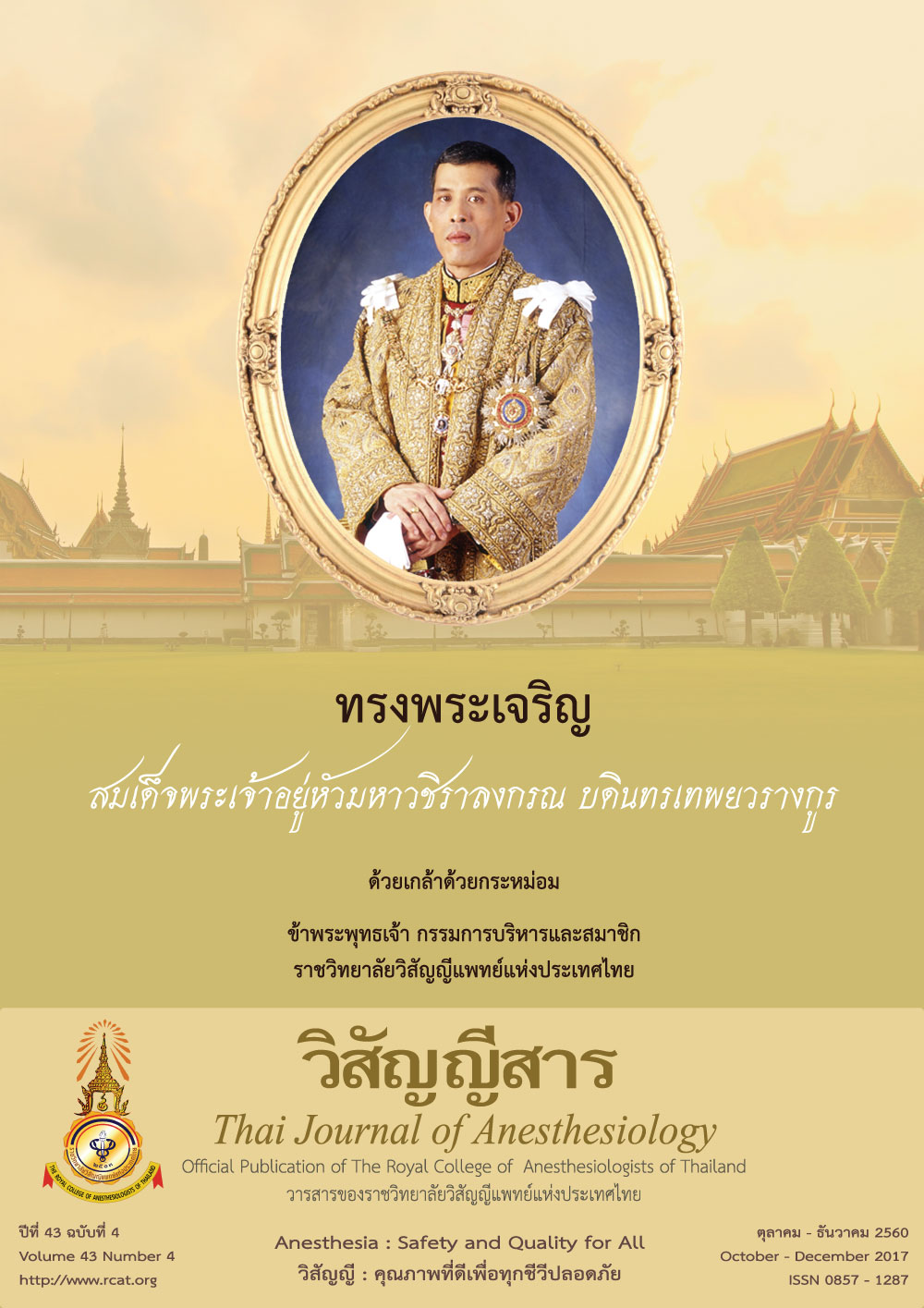Simulation-based medical education to improve Non-Technical Skills
Main Article Content
Abstract
Non-technical skills (NTS) are defined as
“the cognitive, social, and personal resource skills
that complement technical skills, and contribute
to safe and efficient task performance”. Having
non-technical skills can reduce the medical error,
especially when human factor has been cited as
a primary cause. Furthermore, NTS can detect
medical error and reduce the consequences from
medical error, which result in patient safety and
quality improvement.
Simulation based medical education (SBME)
is defined as “any educational activity that used in
medical education to enhance or replace real patient
experience”. SBME plays the key role in improving
learner’s NTS. In this article mentions, the practical
points of how to teach NTS with simulation, such
as educational theory, SBME principle and teaching
steps, were highlighted.
Article Details
References
and assessing safe behaviours. In: Riley RH, editor. Manual
of simulation in healthcare. 2nd ed. Oxford: University
press. 2016: p.249-64.
2. Flin R, Patey R. Non-technical skills for anaesthetists:
developing and applying ANTS. Best Pract Res Clin
Anaesthesiol. 2011;25(2):215-27.
3. Rall M, Gaba DM, Howard SK, Dieckmann P. Human
performance and patient safety. In: Miller RD, editor.
Miller’s anesthesia. 8th ed. Philadelphia: Elsevier Saunders.
2015: p.106-66.
4. Eked Y, Bryson EO, DeMaria Jr S, Jacobson L, Quinones
J, Shen B, et al. The utility of simulation in medical
education: what is the evidence? Mt Sinai J Med. 2009;
76(4):330-43.
5. Rall M, Gaba DM, Dieckmann P, Eich CB. Patient
simulation. In: Miller RD, editor. Miller’s anesthesia. 8th ed.
Philadelphia: Elsevier Saunders. 2015: p.167-209.
6. Naik VN, Brine SE. Simulation: a means to address and
improve patient safety. Can J Anesth. 2013;60(2):192–200.
7. Gaba DM. Crisis resource management and teamwork
training in anaesthesia. Br J Anaesth. 2010;105(1):3-6.
8. Chin C. Simulators, equipment, and props. In: Riley RH,
editor. Manual of simulation in healthcare. 2nd ed. Oxford:
University press. 2016: p.51-62.
9. Fanning RM, Gaba DM. Principle of anesthesia crisis
resource management. In: Gaba DM, Fish KJ, Howard SK,
Burden AR, editors. Crisis management in anesthesiology.
2nd ed. Philadelphia: Elsevier Saunders. 2015: p.25-53.
10. Kohn LT, Corrigan JM, Donaldson MS. To err is human:
building a safer health system. Committee on quality of
health care in America (Institute of medicine, National
academy of sciences). Washington DC: National academy
press; 2000.
11. Fanning RM, Gaba DM. Teaching anesthesia crisis
resource management. In: Gaba DM, Fish KJ, Howard SK,
Burden AR, editors. Crisis management in anesthesiology.
2nd ed. Philadelphia: Elsevier Saunders. 2015: p.54-64.
12. Palaganas JC, Flanagan B, Simon R. Debriefing-theory and
techniques. In: Riley RH, editor. Manual of simulation
in healthcare. 2nd ed. Oxford: University press. 2016:
p.166-84.
13. Fanning RM, Gaba DM. Debriefing. In: Gaba DM, Fish KJ,
Howard SK, Burden AR, editors. Crisis management in
anesthesiology. 2nd ed. Philadelphia: Elsevier Saunders.
2015: p.65-78.
14. Gaba DM. Do as we say, not as you do: using simulation
to investigate clinical behavior in action. Simul Healthc.
2009;4(2):67-9.
15. Aggarwal R, Mytton OT, Derbrew M, Hananel D,
Heydenburg M, Issenberg B, et al. Training and simulation
for patient safety. Qual Saf Health Care. 2010;19(Suppl 2):
ei34-43.


